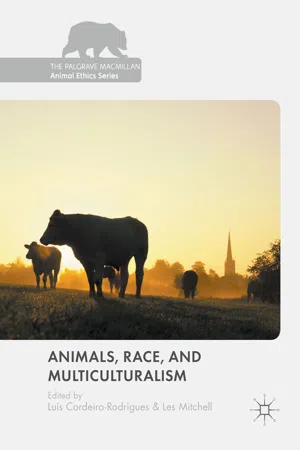2 Kaporos
Kaporos is neither a battery hen facility nor a broiler hen operation, but it is just as bloody.
Kaporos , a
Jewish ritual of atonement, is a preparation for Yom Kippur (Day of Atonement). Participants seize an adolescent bird by his or her wings. Then the chicken is swung around three times over the head of the person seeking atonement “[w]hile reciting the appropriate text”.
1 The hen’s throat is then slit; her body tossed away; and the cost of the hen (or sometimes her body) is donated to the poor.
2 Some 60,000 chickens are sold for roughly $16–$20 every year for this ritual.
3 In crowded cities like New York and Los Angeles, when Kaporos is in full swing (so to speak), passersby and residents witness the arrival of a great flock of chickens crammed into bright yellow plastic crates or wire cages. Some are dead, some appear to be very sick, all look extremely distressed.
4 Cherylynn Brown of Santa Monica, California, described what she witnessed:
The chickens had “chirping baby voices. Their feathers had urine and feces covering them so they were a dark yellow-brown. Filth had crystallized on their feathers into hard stones along their undersides. When I found them,” she wrote, “they were wet from lying in the plastic cover on the concrete floor that was covered with urine, feces, and blood. Of the five holding pens, only two had containers of drinking water—and those were brown, full of excretions.”5
After visiting a
Kaporos site, David Rosenfeld, a member of one of the religious Jewish communities in Brooklyn, wrote:
I believe they receive no food or water for the week or so that they are in the possession of the retailers. They certainly receive no food or water over the Shabbat. One Kapparot station had the birds outside exposed to the rain on a Shabbat [ Saturday ] through Sunday. I saw birds dead in their crates. Birds were crushed. Birds were opening and closing their mouths, probably out of thirst. The retailer who sold me my birds [to live in a sanctuary] tossed them into my box as if they were loaves of bread.6
Chickens exploited for Kaporos have only one end—they are slated to have their throats slit (sometimes, as it happens, only partially). Those not slaughtered are left to die in their cages, abandoned without food or water.7
Among certain Orthodox communities, especially Hasidic communities, Kaporos is practiced every year just before Yom Kippur.8 Those wishing to participate usually journey to posted sites, where the chickens are stacked crate on crate. They buy an adolescent chicken and swing the bird over their head three times while reciting the appropriate verse. The young bird peeps loudly while the human’s hope for atonement is expressed in these words: “This is my exchange, my substitute, my atonement; this rooster (or hen) shall go to its death, but I shall go to a good, long life, and to peace”.9 After this, the chicken is “slaughtered in accordance with halachic procedure and its monetary worth given to the poor, or, as is more popular today, the chicken itself is donated to a charitable cause”.10 As can be seen in many YouTube videos posted online, after the throat is ostensibly slit (the throat is not always slit cleanly), the birds are thrown into trash bins or bags.
YouTube clips also show the flaws of Halachic slaughter procedures: Seizing a hen and cutting her throat is archaic, barbaric, and often ineffective. Contemporary slaughter facilities generally include some method of stunning before killing in order to prevent struggling and in the hope of rendering the anymal11 unconscious. Knowing this, it is not surprising that Rabbi Dr. Yanklowitz, author of six books on Jewish ethics , writes that he “cannot pretend anymore that kosher meat, poultry and dairy is any [more] ethical than nonkosher food”.12
In light of the gruesome nature of this ritual, it is surprising that Kaporos is practiced even though it is not mentioned in the Torah or the Talmud13—even though it is not a required practice.14 This ongoing, mass bloodletting is even more surprising given that there is an alternative method of atonement. Rabbi David Rosen, International Director of Interreligious Affairs for the American Jewish Congress notes, “Those who wish to fulfill this custom can do so fully by using money”.15 Kaporos can be practiced, for example, by placing money in handkerchief and swinging the money over one’s head three times.
This ceremony, which is mentioned in many prayer books including the highly regarded Artscroll Siddur, preserves, even enhances, the sense of repentance and the tradition of charity, since no innocent creature has to suffer and die for a person’s misdeeds.16
Kaporos is a ...
